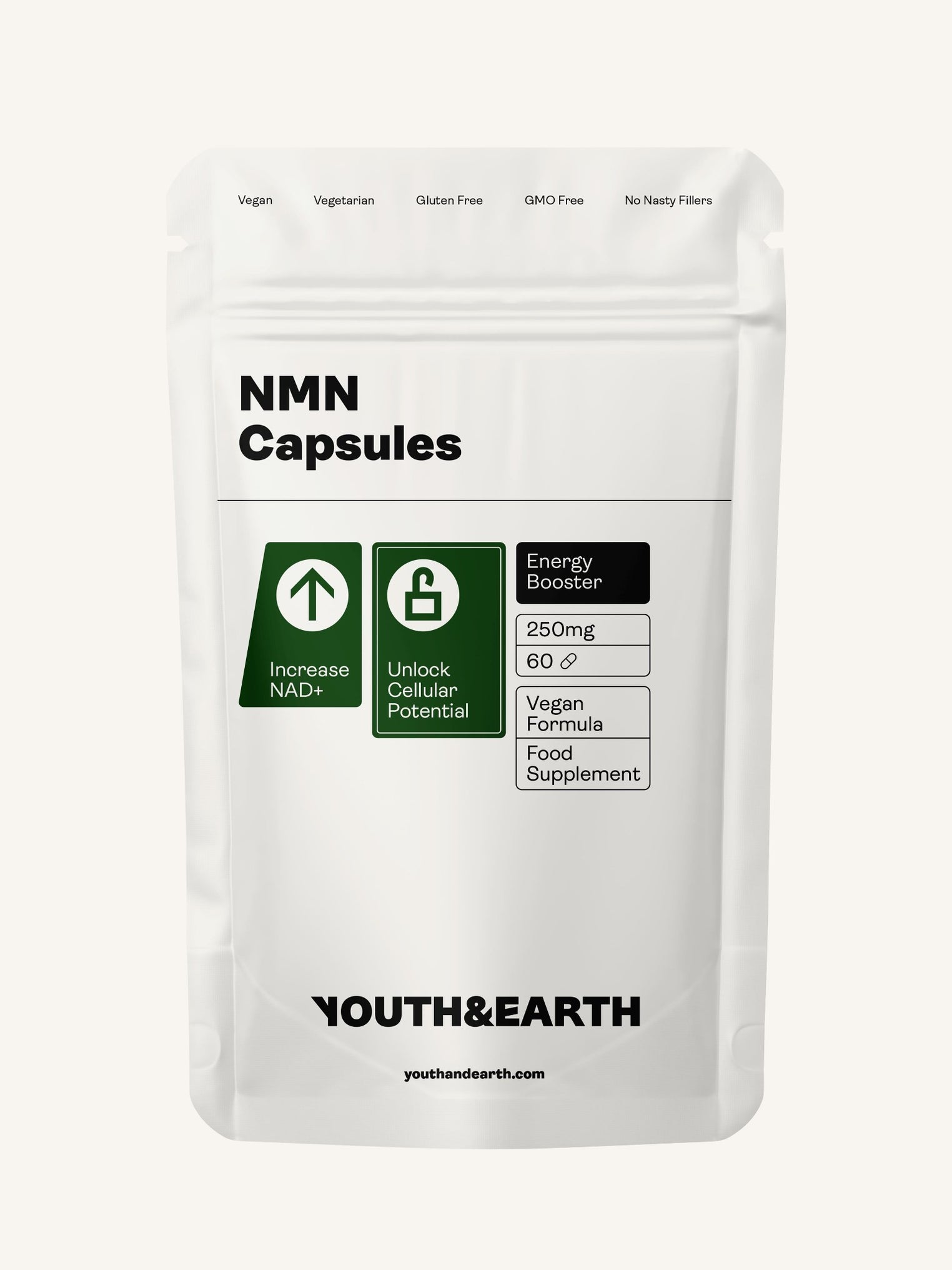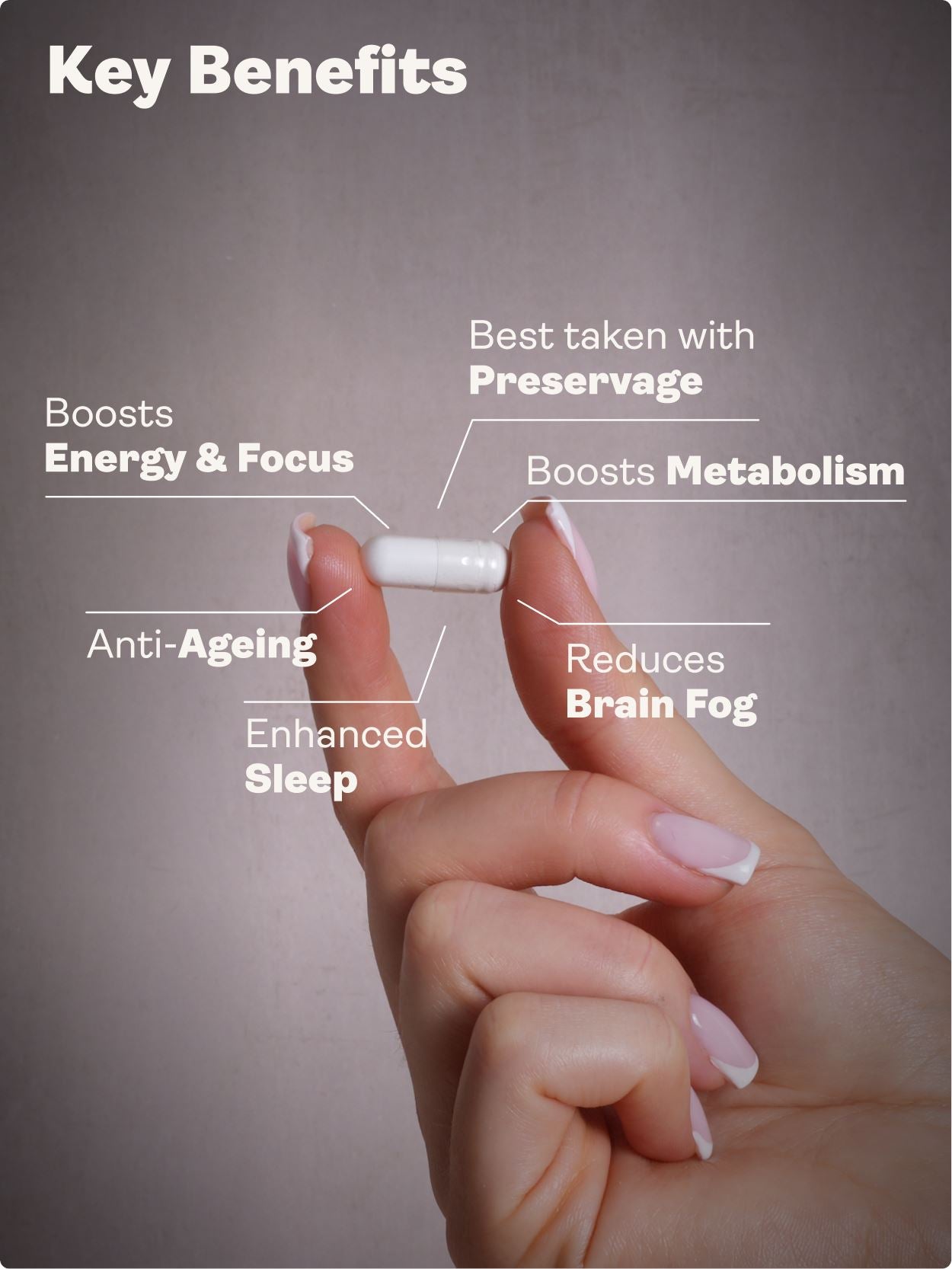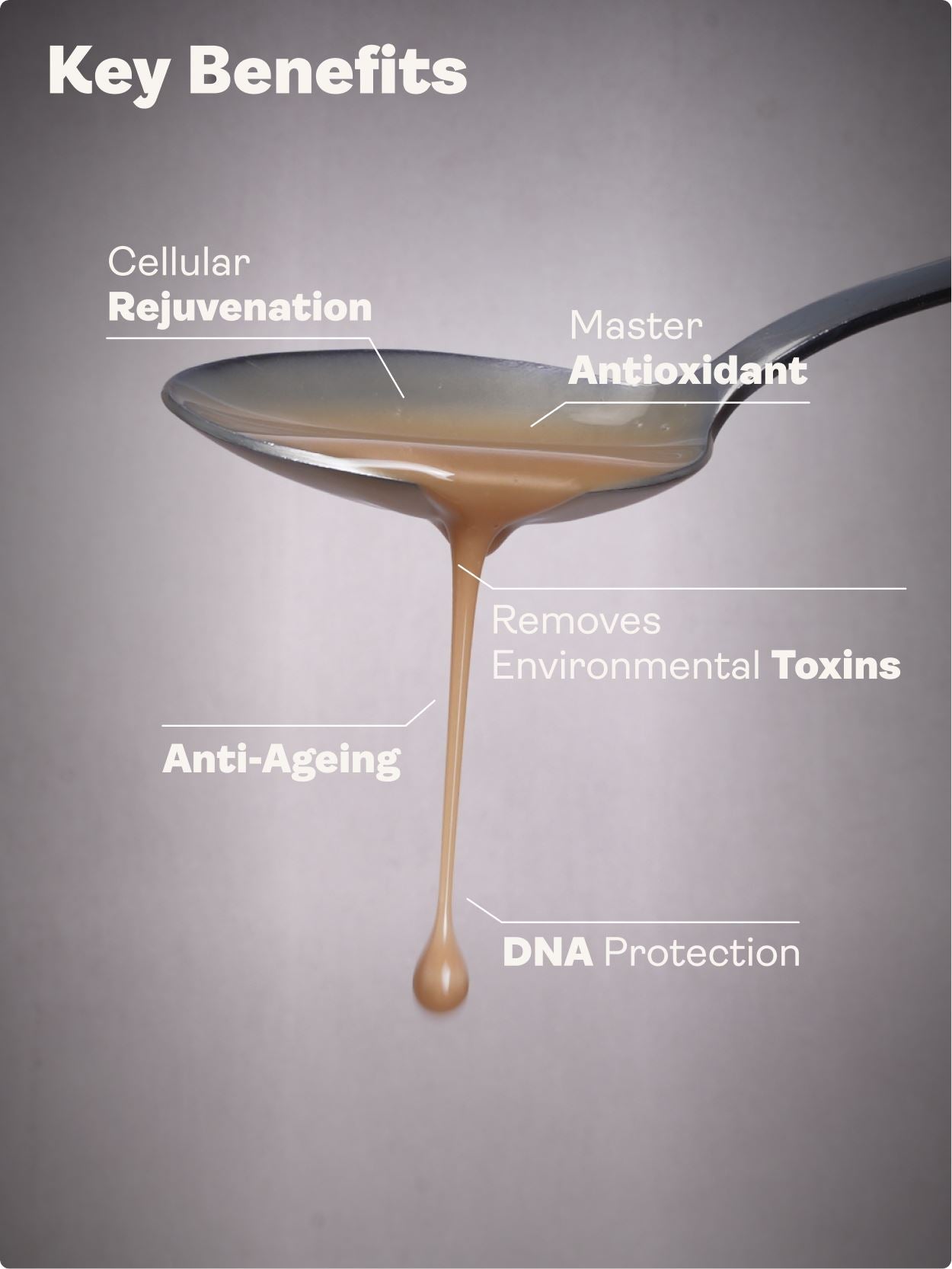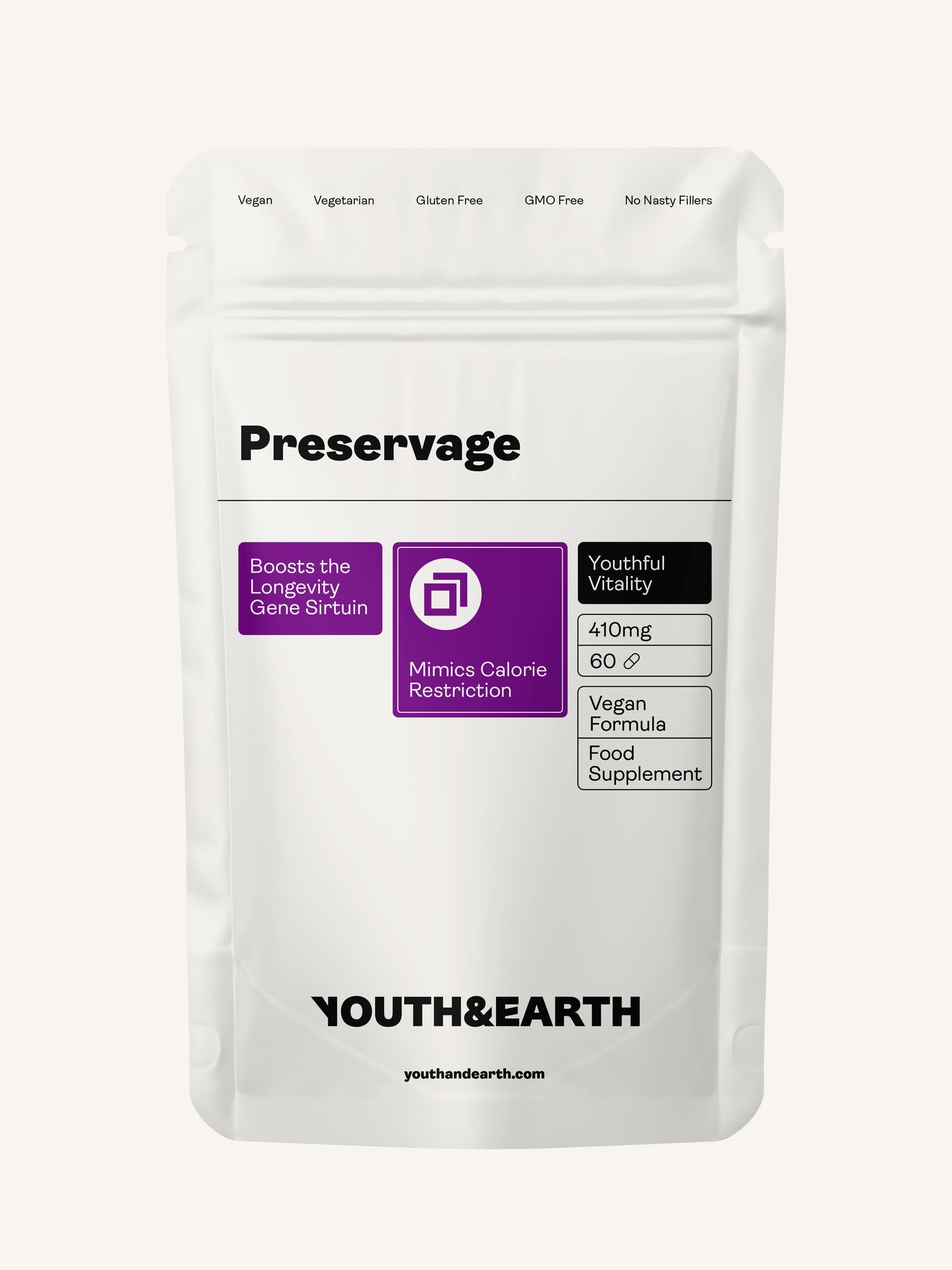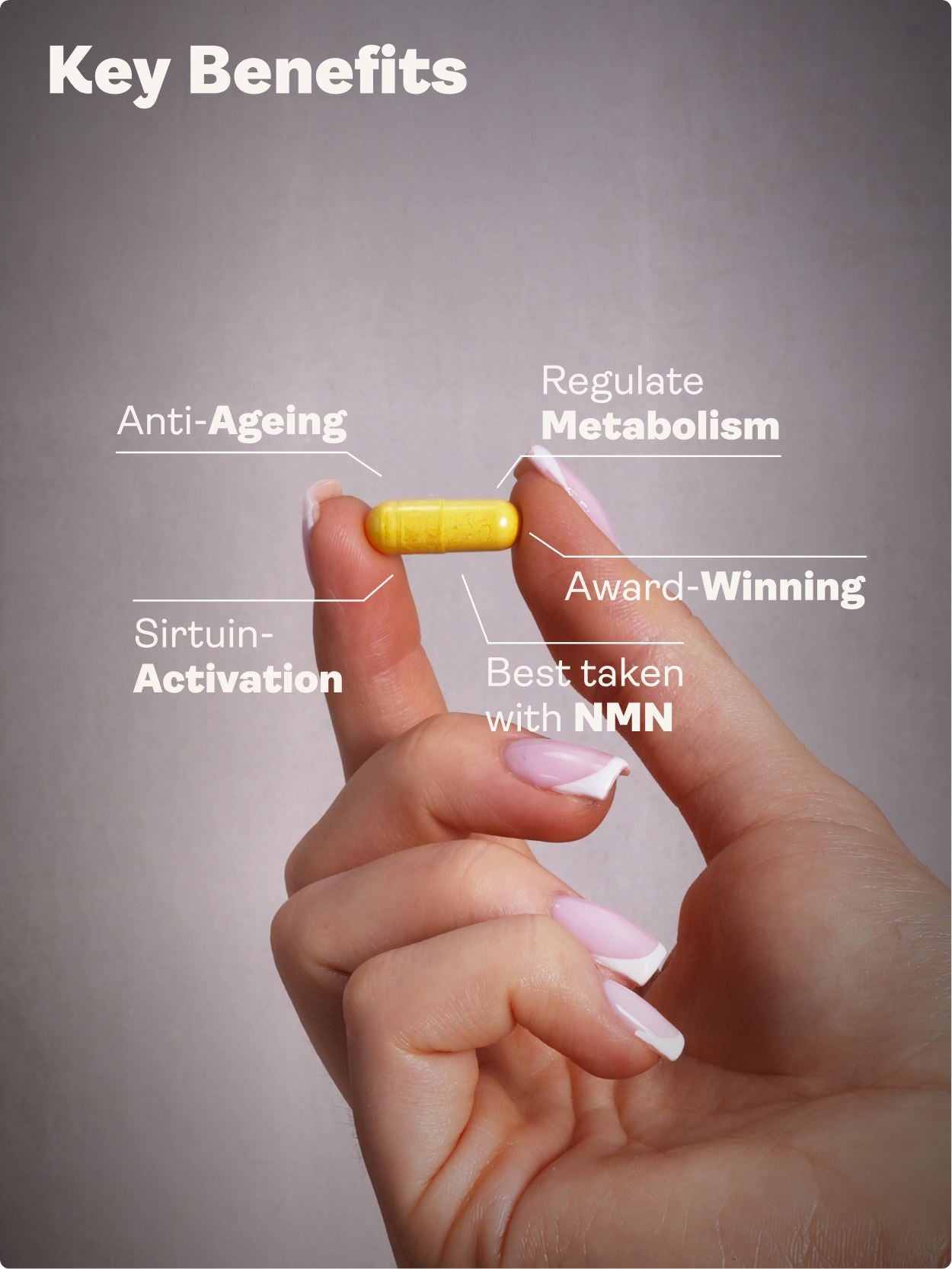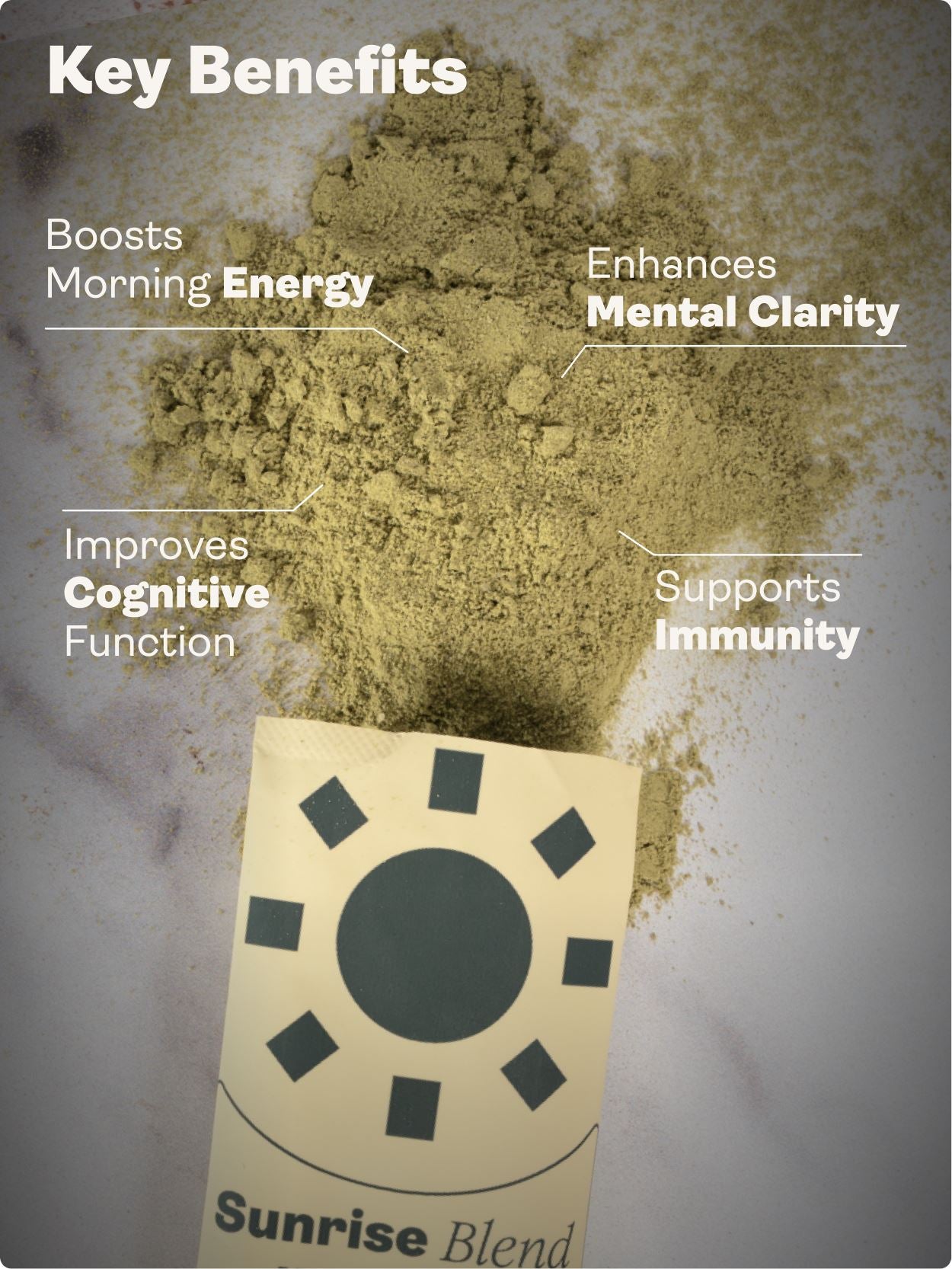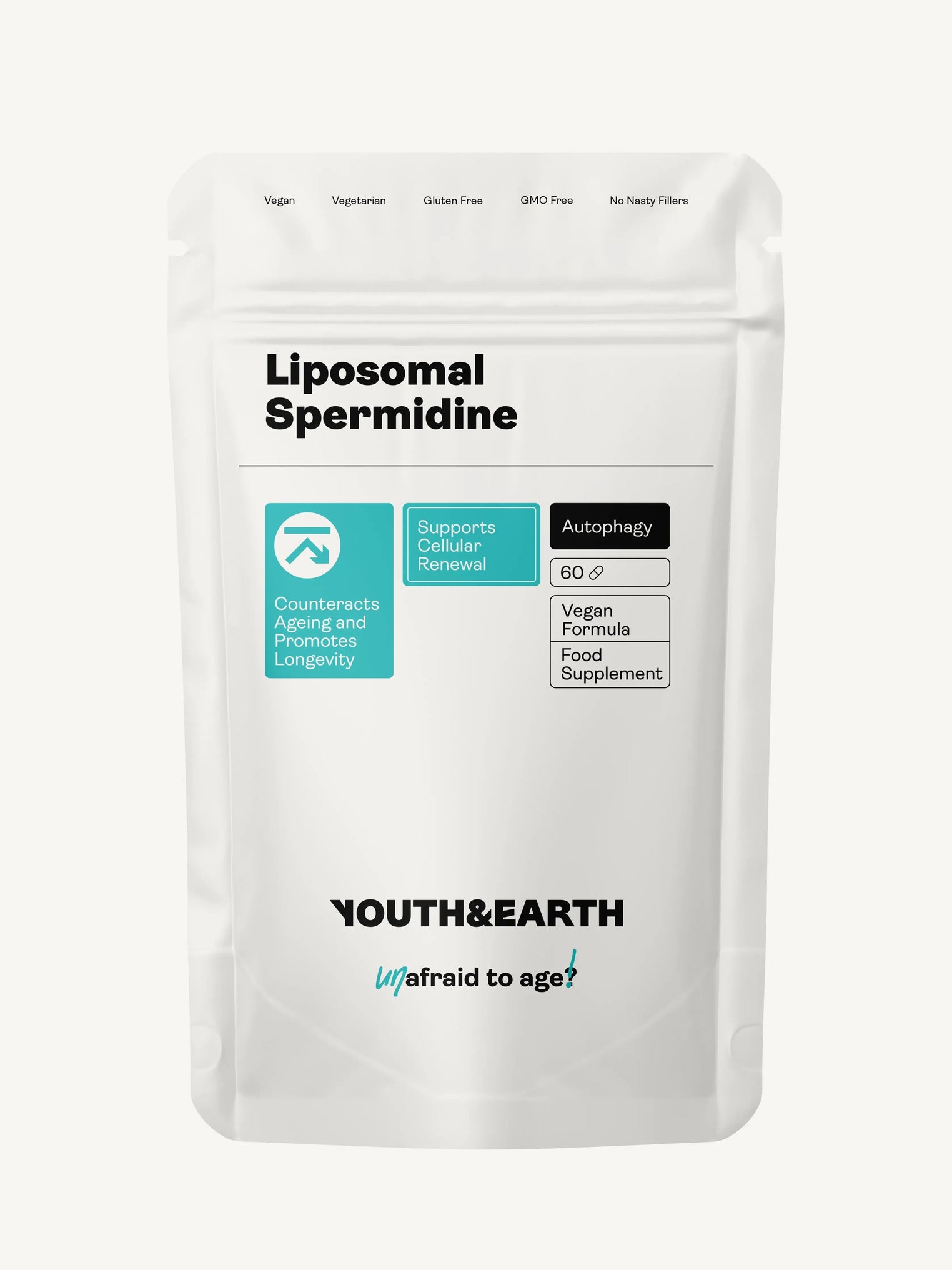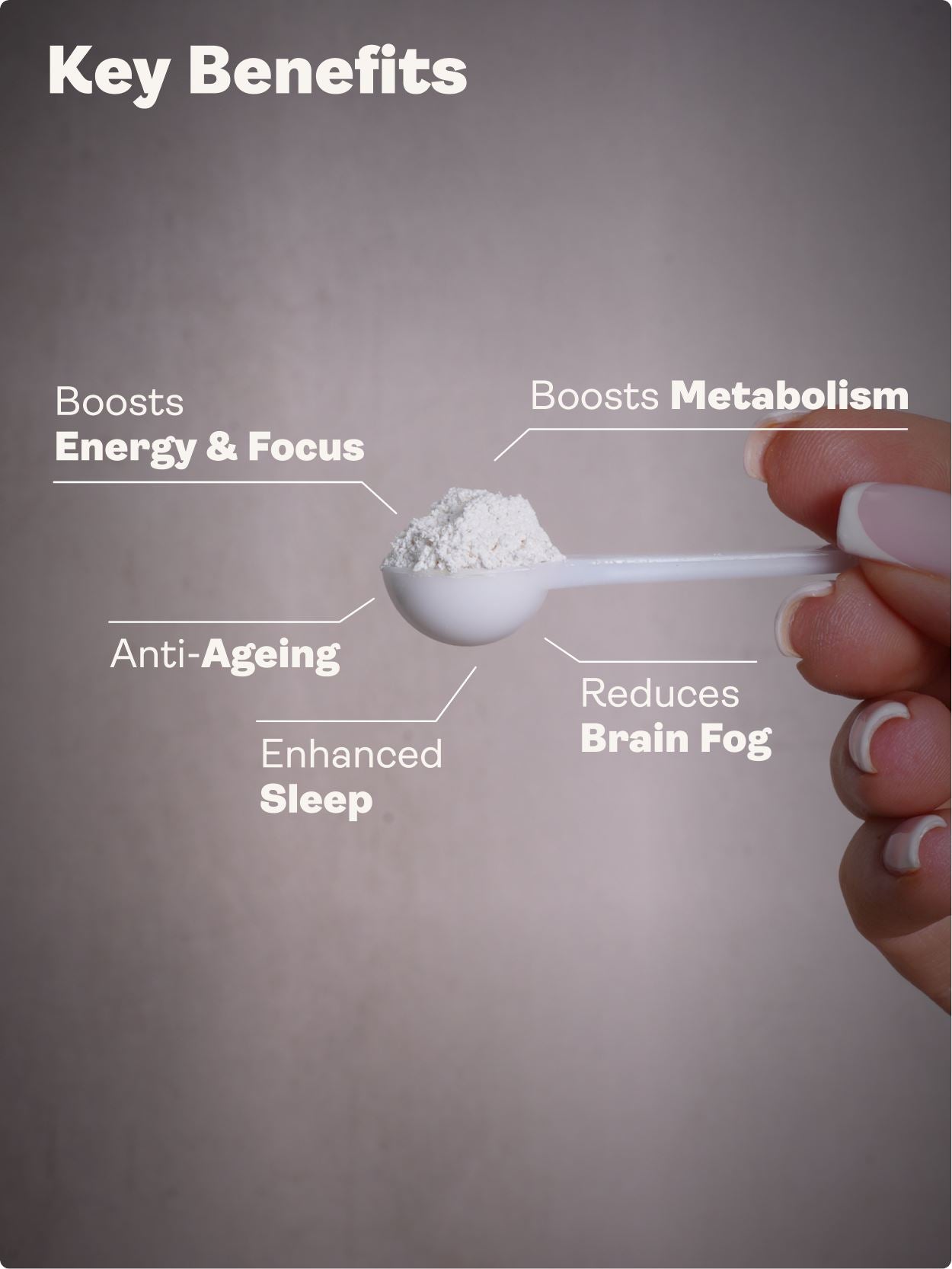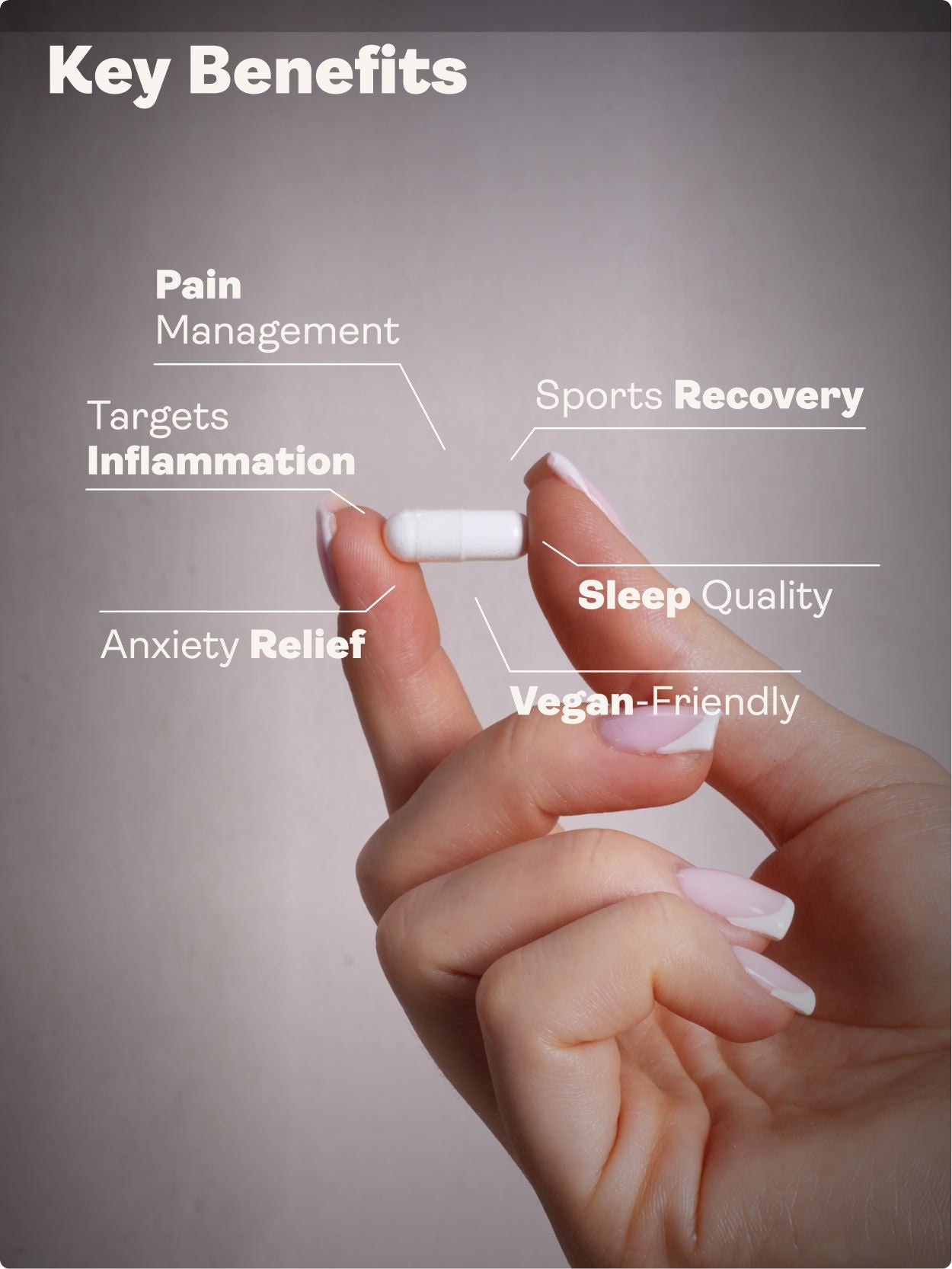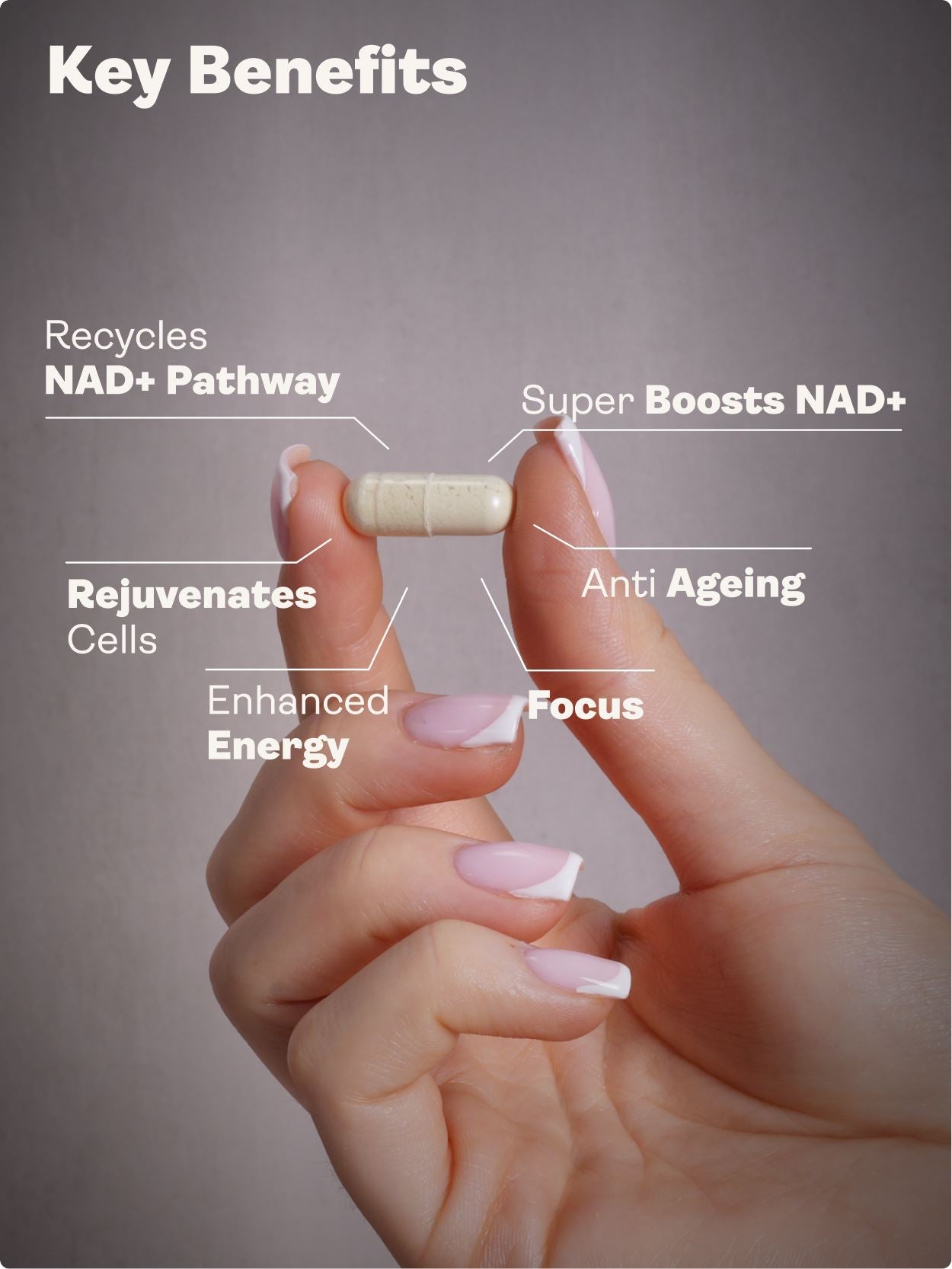Are you curious whether rapamycin can extend your healthspan without compromising immunity? Wondering how to dose it safely, monitor side-effects, and integrate it into a broader anti-ageing, biohacking strategy?
TL;DR
Rapamycin targets the mTOR pathway to support healthy ageing and longevity. For non-transplant users, intermittent, low-to-moderate weekly dosing is preferred to capture benefits (autophagy, lower inflammaging, better cellular housekeeping) while reducing risks tied to continuous daily use. Start low (2–3 mg weekly), titrate cautiously (5–10 mg), monitor labs (lipids, glucose, liver, blood counts), avoid drug–food interactions (especially grapefruit), and work with a knowledgeable clinician. Consider lifestyle and nutrition “stacking” so results compound without unnecessary risk.
Science Snapshot
- Primary target: Rapamycin inhibits mTOR (mechanistic Target of Rapamycin), a central nutrient-sensing pathway that drives growth and, when chronically active, accelerates ageing biology.
- Healthy ageing mechanisms: Increased autophagy and proteostasis, reduced inflammaging, improved mitochondrial quality control, and delayed cellular senescence.
- Dosing logic: Intermittent, once-weekly dosing aims to capture benefits while minimizing chronic immunosuppression seen with daily transplant regimens.
- Monitoring: Lipid panel, fasting glucose or HbA1c, liver function tests, and complete blood count (CBC) help track safety and guide adjustments.
- Integration: Pair with resistance training, protein adequacy, circadian-aligned sleep, and metabolic hygiene for compounding gains in longevity and anti-ageing outcomes.
Why do biohackers and longevity clinicians use rapamycin?
Rapamycin’s appeal in longevity comes from its consistent effects on healthy ageing pathways across species. While human lifespan data are not yet definitive, the mechanistic rationale is strong and aligns with the broader anti-ageing goal of improving healthspan—years lived in good health.
In the biohacking community, rapamycin is viewed as a targeted tool, not a silver bullet. It is integrated into a system that includes nutrition, training, sleep, stress control and periodic lab monitoring. That systems view is essential for safe, sustainable results and healthy ageing.
How rapamycin works: mTOR, autophagy and healthy ageing
mTOR is a nutrient and growth sensor. It coordinates cell growth when resources are plentiful. In adulthood, chronically high mTOR activity is linked with accelerated ageing, impaired autophagy, and metabolic drift. Rapamycin partially inhibits mTOR, shifting the body toward repair and maintenance.
- Autophagy: Enhanced cellular recycling clears damaged proteins and organelles.
- Inflammaging: mTOR inhibition can reduce chronic inflammatory tone that rises with age.
- Mitochondria: Better quality control supports energy production and lowers oxidative stress.
- Senescence: Slower accumulation of dysfunctional “zombie” cells supports tissue function.
Why dosing strategy matters for anti-ageing
Daily, high-dose rapamycin is used clinically for transplant immunosuppression, which is not the goal in longevity. For anti-ageing, intermittent, weekly dosing is preferred. This pattern seeks to achieve periodic mTOR inhibition while allowing immune function to rebound between doses.
The guiding principle is simple: use the lowest exposure that produces clear benefits, monitor closely, and avoid chronic suppression.
Starter protocols: weekly dosing and cycling
The following longevity-oriented schedules reflect real-world practice patterns. They are not medical advice and should be personalized with a clinician.
| Protocol | Dosage | Frequency | Notes |
|---|---|---|---|
| Basic (Beginner) | 2–3 mg | Every 7 days | Establish tolerance; low risk of side-effects; reassess after 4–6 weeks. |
| Intermediate | 5 mg | Every 7 days | Consider if Basic is well-tolerated; monitor labs at regular intervals. |
| Advanced | 10 mg (up to 20 mg) | Every 7 days | For experienced users only, ideally with cycling (e.g., 6 weeks on / 2 weeks off) and clinician oversight. |
Cycling option: Some users run 6 weeks on, 2 weeks off to allow physiologic reset and to reduce cumulative exposure.
Titration rules: when and how to adjust your dose
- Start low, go slow: Begin with 2–3 mg weekly for 4–6 weeks.
- Increment carefully: If well-tolerated and goals are unmet, consider 1–2 mg increases, reassessing labs and symptoms.
- Personalize: Body mass, age, metabolic health, and immune status all influence response.
- When to hold or de-escalate: New mouth ulcers, rising triglycerides, frequent infections, or abnormal labs warrant pausing or reducing.
Food timing, absorption and what to avoid
- With food: Take with a meal containing healthy fat (e.g., olive oil, fish, avocado) to support absorption. Be consistent week to week.
- Avoid grapefruit family: Do not combine with grapefruit, Seville oranges, or pomelo. These can raise blood levels unpredictably.
- Weekly rhythm: Take on the same day and time to simplify adherence and monitoring.
Safety labs and biomarkers to monitor
Regular monitoring helps you and your clinician adjust dose, cadence, and supportive care:
- Lipid panel: Total cholesterol, LDL-C, HDL-C, triglycerides.
- Glycaemia: Fasting glucose and/or HbA1c to watch insulin sensitivity.
- Liver function tests (LFTs): ALT, AST, ALP, bilirubin.
- Complete blood count (CBC): White blood cells, red blood cells, platelets.
- Optional: hs-CRP (inflammation), ferritin, and periodic kidney function depending on context.
Frequency: Baseline before starting, then every 6–12 weeks during titration, and every 3–6 months once stable.
Common side-effects and practical fixes
| Issue | What to watch | Mitigation |
|---|---|---|
| Mouth ulcers | Painful sores 3–7 days post-dose | Baking soda rinses; topical mouth gels; consider dose reduction or cycling. |
| Higher lipids | Rising triglycerides or LDL-C | Nutritional tune-up, omega-3 intake, fiber; reassess dose; clinician-guided interventions if persistent. |
| Infection risk | Unusual frequency or severity | Reinforce intermittent dosing; pause during acute infection; medical review. |
| GI upset | Nausea, mild discomfort | Take with food; consider timing changes; evaluate other meds or supplements. |
Who should avoid or use extra caution
- Pregnancy or trying to conceive: Avoid unless specifically advised by a specialist.
- Significant immune compromise: Discuss risk–benefit thoroughly with your clinician.
- Liver or kidney disease: Require individualized review and close monitoring.
- Medication interactions: Rapamycin is metabolized via CYP3A4. Antifungals, macrolide antibiotics, some antihypertensives, certain antidepressants, and HIV medications can interact.
- Diabetes or prediabetes: Monitor glucose control closely and adjust lifestyle and care plan accordingly.
Biohacking strategies for longevity: stacking rapamycin with lifestyle
Rapamycin is more effective when it supports, rather than replaces, core healthy-ageing habits. These interventions are synergistic with mTOR modulation and autophagy.
- Protein-aware nutrition: Ensure adequate daily protein (especially if resistance training) to maintain lean mass while leveraging periodic catabolic signaling.
- Resistance training: 2–4 sessions weekly to preserve muscle, bone density, and insulin sensitivity.
- Metabolic hygiene: Whole-food diet, fiber, omega-3s, and mindful alcohol intake support lipids and glycaemia.
- Sleep and circadian rhythm: Target 7–9 hours, consistent schedule, morning light exposure.
- Stress fitness: Breathwork, nature exposure, and social connection reduce allostatic load that accelerates biological ageing.
Adjunct supplements and supportive nutrients
Targeted nutrients can support the anti-ageing goals of rapamycin, especially lipid balance, mitochondrial function, and recovery.
- Omega-3 fatty acids (EPA/DHA): Found in oily fish; support triglycerides and inflammation balance.
- Creatine monohydrate: Supports strength, cognition, and cellular energy systems.
- Magnesium (e.g., magnesium threonate): Involved in energy metabolism and sleep quality; brain-targeted forms support cognitive function.
- Glycine and collagen peptides: May aid connective tissue and sleep; complement protein intake.
- NAC (N-acetyl-cysteine) and alpha-lipoic acid: Redox support for cellular housekeeping.
Note: Youth & Earth supplements can support longevity and anti-ageing strategies alongside lifestyle and clinician-supervised rapamycin use.
Conclusion & Longevity Checklist
Intermittent rapamycin can be a powerful anti-ageing tool when it respects biology’s rhythms. The objective is to nudge repair pathways, not to suppress the immune system chronically. Keep protocols simple, personalized, and data-informed.
Quick Checklist
- ☑ Start low (2–3 mg weekly), reassess after 4–6 weeks.
- ☑ Titrate cautiously (5–10 mg) only if needed and tolerated.
- ☑ Avoid grapefruit/Seville orange/pomelo; take with a consistent, healthy-fat meal.
- ☑ Run baseline labs and repeat on a schedule (lipids, glucose/HbA1c, LFTs, CBC).
- ☑ Pause or reduce if side-effects arise; cycle as appropriate (e.g., 6 on / 2 off).
- ☑ Train with resistance, prioritize sleep, and align nutrition with goals.
- ☑ Partner with a qualified clinician; document doses, dates, and lab trends.
Frequently Asked Questions (FAQ)
How does rapamycin support anti-ageing and longevity?
Rapamycin inhibits mTOR, shifting biology from growth to repair. This supports autophagy, reduces chronic inflammation, improves mitochondrial quality control, and slows senescence—core mechanisms of healthy ageing.
What is the safest way to start rapamycin for longevity?
Begin with a low weekly dose (2–3 mg), take with food, avoid grapefruit interactions, and monitor labs. Increase slowly only if needed and well-tolerated, ideally with clinician support.
Why is intermittent dosing preferred over daily dosing?
Intermittent dosing aims to capture benefits while minimizing the risk of ongoing immunosuppression that can occur with daily regimens used in transplant medicine.
Which lifestyle habits best complement rapamycin?
Resistance training, protein-aware nutrition, sleep regularity, stress management, and metabolic hygiene amplify rapamycin’s longevity effects and protect lean mass.
What should I monitor while taking rapamycin?
Track lipid panel, glucose/HbA1c, LFTs, and CBC at baseline and regularly thereafter. Watch for mouth ulcers, infection frequency, or unexpected fatigue and discuss changes with your clinician.
Glossary
- mTOR (mechanistic Target of Rapamycin)
- A nutrient-sensing pathway regulating growth and metabolism; chronic activation correlates with faster ageing.
- Autophagy
- Cellular recycling process that clears damaged components, supporting cellular health and longevity.
- Inflammaging
- Age-related chronic, low-grade inflammation linked to multiple age-associated diseases.
- Healthspan
- The number of years lived in good health and functional independence.
- Intermittent dosing
- Taking a medication periodically (e.g., once weekly) rather than daily to balance benefit and risk.







